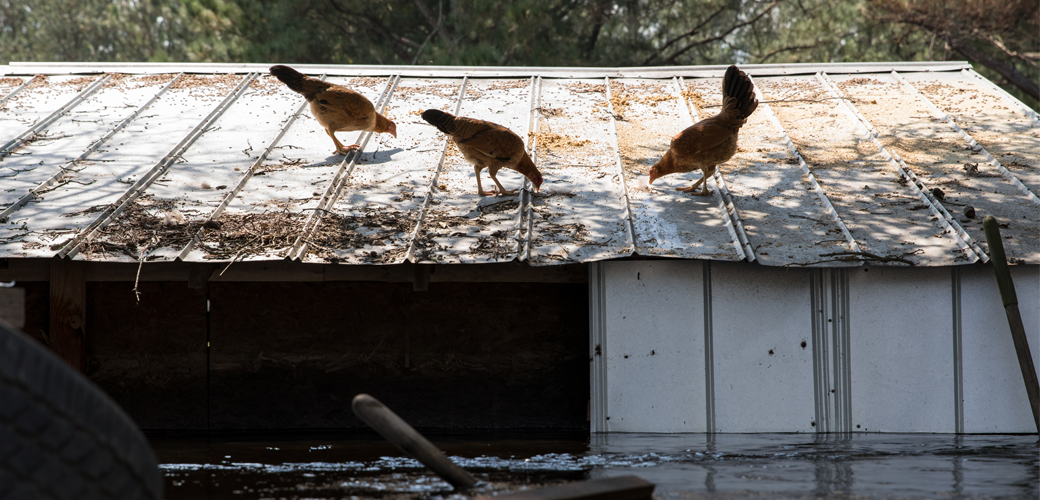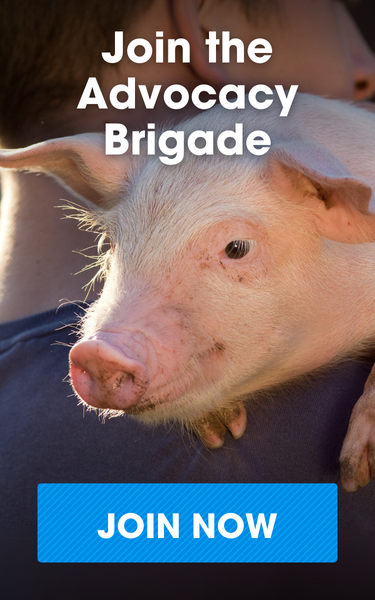
Why Millions of Farm Animals Drowned During the Hurricanes

When Hurricane Florence struck the Southeast U.S. last month, in addition to devastating homes and communities, it also flooded industrial farms. News reports showed the tragic images of these facilities flooded to roof-level, and the public watched in horror as 4.1 million chickens and 5,500 pigs were left to drown inside. The fragility of factory farming has never been so obvious, and it has never been more urgent for us to change how farm animals are treated in this country.
On industrial farms, tens of thousands of dairy cows, pigs, chickens and turkeys are caged, crated or otherwise closely confined in windowless sheds. On farms of this magnitude there is virtually no ability to move or evacuate the animals, nor for animals to escape on their own in the event of a flood or other emergency. Yet many of these farms are located directly in flood zones.
The federal PETS Act, which passed after Hurricane Katrina, protects household pets and service animals during disasters by requiring local agencies to have disaster evacuation and response plans in place. Other facilities that keep, breed or exhibit large numbers of animals—including commercial-scale puppy breeders, research labs and most zoos—must be licensed by the U.S. Department of Agriculture and apply the animal-care standards mandated by the Animal Welfare Act. While there’s been legislation introduced in Congress to require those facilities to have disaster plans in place, animals on factory farms have no protections and are particularly at risk.
In addition to unimaginable animal suffering, disaster-affected industrial farming operations create environmental and health catastrophes. The overwhelming concentration of animals creates an equally overwhelming concentration of animal waste, often held in open-air “lagoons,” many of which overflowed during Florence. This sent massive quantities of fecal matter, antibiotics, infectious bacteria and toxic chemicals pouring into the flood waters and blanketing the region.
While we cannot predict when the next storm will come, we can be certain there will be more and that the dangers will only increase in future disasters, as climate change is expected to produce more frequent and more intense hurricanes. We can already see the effects with Hurricane Michael, which barreled down shortly after Florence and threatened dairy and poultry operations with power outages and flooding. It is still too early to evaluate the damage Michael left in its wake.
The ASPCA will continue to advocate for better treatment and consideration of farm animals through legislation and regulations. But everyone has enormous power to demand change through thoughtful food purchases. Visit our Shop With Your Heart site to find food label guides, farm lists and brand lists to help you make the most informed, compassionate choices possible. Together, we can help to reduce future tragedies and demand a better, kinder food system.

